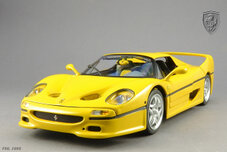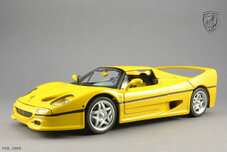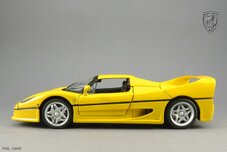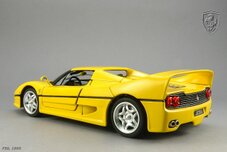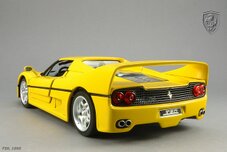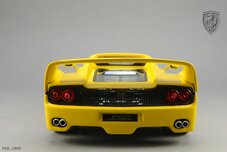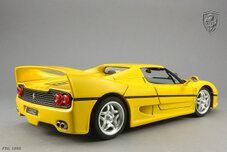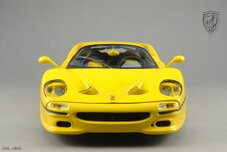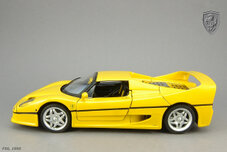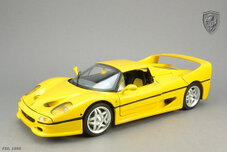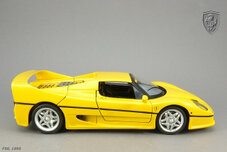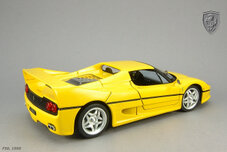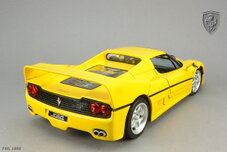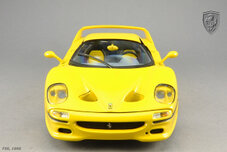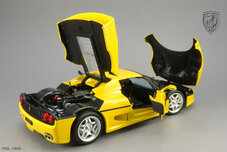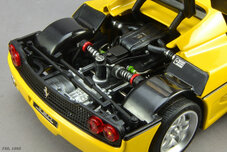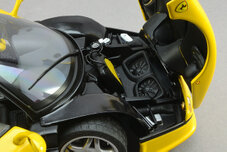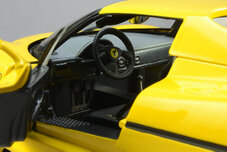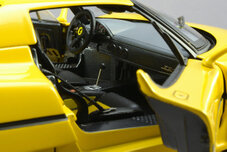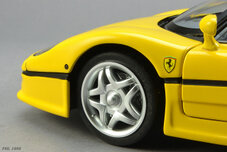1995, F50 (Elite, diecast)
The F50 was the Ferrari “extreme machine” of the nineties taking over the mantle from the F40. As with the F40 it was also a celebration model, this time heralding fifty years of Ferrari as a car manufacturer, albeit in reality a little early. At the unveiling of the new model at the 1995 Geneva Salon, Ferrari President Luca Di Montezemolo stated that only 349 examples would be produced, one less than they thought that they could sell. A definite change in marketing strategy, brought about by the change in market conditions, after the slump at the beginning of the decade.
Whereas the two previous “Supercars” had been powered by turbocharged V8 engines, the nineties variant used a normally aspirated V12 engine as the motive force, albeit more than fifty per cent greater in capacity than its predecessors. Similarly the earlier models had introduced increasing degrees of technology learned from the Formula One cars, particularly in the field of composite materials.
The F50 took this crossover technology to the limit, with the utilisation of a composite construction monocoque chassis, and used the engine, derived from that of the 1990 Formula One car, as a stressed member. It was described as the closest you could get to a Formula One car for the public roads. The carbon fibre passenger cell had the front suspension mounted directly to it, with a tubular substructure projecting forward to support the radiator and ancillary equipment. To the rear of the cell was bolted the engine, which was a load bearing member for the transmission and rear suspension, just as on current Formula One cars. The 4.7-litre engine was derived directly from the Formula 1 unit used on the 1989 F1-89.
The Pininfarina styling didn’t have the raw beauty of the F40, and bore little in common with any other Ferrari model, apart from the satin black finished side indent line and traditional paired rear light treatment. It had plenty of curves, intakes and exhaust slots, and an even more radical rear wing than the F40, but the body shape was more one of aerodynamic function than aesthetic pleasure. It did have a removable hardtop, so that the occupants could come even closer to the F1 experience.
There was nowhere to stow the hardtop on the car, so a small canvas canopy was provided if one ventured out without it and the weather turned inclement. When fixed the hardtop gave the car a greater fluidity of line, as when removed two small roll hoops and an aerodynamic surround section flowing into the sail panels added to the number of complex body curves. Between the sail panels was the clear plastic louvred engine cover, which afforded a good view of the carbon fibre intake plenum atop the engine, and the surrounding mechanical components.
auto.ferrari.com

